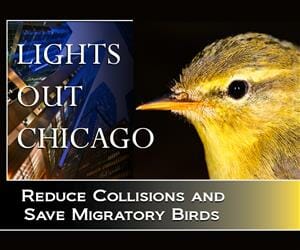Two Years In With OSHA’s Rope Descent Systems Rule Change — What We’ve Learned
By Terry McDonald, S.E., P.E, Klein & Hoffman
Across Chicagoland it’s a common sight to see window washers perched on the sides of the city’s buildings, sometime hundreds of feet above the street, at work cleaning the windows and glass façades of the city’s skyline. For the past 18 months, building owners and managers first learned about and then implemented the changes in Occupational Safety and Health Administration (OSHA) Final Ruling for Façade Access Equipment for General Industry — as it related to window cleaning. What issues have surfaced as the rules were implemented?
As BOMA members learned, the ruling contained numerous regulatory updates but two sections impacted nearly every building in the Chicagoland area. The first was the requirement for owners to provide compliant anchorages to allow for rope descent systems (RDS), also known as bosun’s chairs, which is the most common technique for window cleaners (OSHA 1910.27(b)). This owner requirement is not stipulated for anchors used for construction purposes.
The second update was defining when fall protection is necessary along edges of low-slope roofs (OSHA 1910.28(b)(13)).
In brief, the key rule changes are:
- Requirement of anchorage and certification of anchorage.
- Establishment of zones based on a worker’s proximity to a roof edge and the stipulated safety measures of that zone.
What are some of the issues that building owners and property managers have encountered since implementation of the rule began?
- Qualified Consultants. While difficult to find, it is recommended that owners and property managers identify qualified consultants who understand the various nuances of OSHA and can provide practical solutions. The consultant will need to understand the design load requirements and the behavior of the existing building structure to develop the proper anchorage design. The design should include anchors that provide adequate coverage for both rope descent and fall protection, while maintaining efficiency for the end user.
- Qualified Installers. Qualified installers are a must and those installers need to be prepared to deal with a range of issues. Sometimes the rooftop conditions are not as expected. In addition, older buildings may not have a complete set of the original structural drawings. Once the roof is opened to install the anchor points, thick insulation or topping slab may be discovered. To avoid surprises, some exploratory work may be needed to determine what is required to ensure a proper installation and avoid costly change orders.
- Inspection/Testing. For some building owners and property managers, the frequency of inspection and certification of the anchors is confusing. A qualified consultant must certify each anchorage at least every ten years, usually by a physical load test of 5,000 pounds. Additionally, OSHA states a qualified person must visually inspect each anchorage annually. Proof of certification in writing is to be submitted to the vendor prior to usage. If your building does not have compliant anchorages — or no anchors at all — new anchorages will need to be designed, installed and certified.
- Unbudgeted Expense. The lack of compliant anchorages, underperforming anchorages or no anchors is not uncommon especially for older buildings. Addressing the issue can require a significant expenditure that may not be budgeted. In that scenario, some building owners and property managers have suspended the window cleaning and live with dirty windows until the funds for the project can be allocated.
In our experience, there has been a quick and widespread response from Chicago area building owners to comply with the rule changes while other regions have not acted as rapidly. As more of these systems are installed, updated, upgraded and certified, it’s hoped that the days when a window cleaner tied off to an air conditioning condenser, a vent, a gate or even conduit have passed into forgotten history.
Terry McDonald, S.E., P.E. is an associate principal and a senior structural engineer at Klein & Hoffman, structural engineers and architects, and BOMA/Chicago member.

